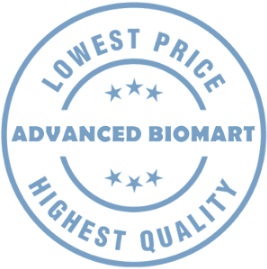- Tel:1-862-686-3631
- Fax: 1-323-978-5598
- Email: [email protected]
| Cat#: | RANKL-100HRP |
| Product Name: | Recombinant Human RANKL / TNFSF11 Protein |
| Synonym: | RANKL,TNFSF11,CD254,OPGL,hRANKL2 |
| Gene Introduction: | The full name of RANKL gene is receptor activator of nuclear factor-κB ligand gene. This gene, also known as TNFSF11 gene, encodes a member of the tumor necrosis factor (TNF) cytokine family which is a ligand for osteoprotegerin and functions as a key factor for osteoclast differentiation and activation. This protein was shown to be a dentritic cell survival factor and is involved in the regulation of T cell-dependent immune response. RANKL has been identified to affect the immune system and control bone regeneration and remodeling. |
| Description: | Recombinant human RANKL protein was produced in Human cells. A DNA sequence encoding the human RANKL was expressed with the Fc Tag at the N-terminus. The RANKL human recombinant protein was purified by our unique purification techniques. |
| Source: | Human Cells |
| Predicted N Terminal: | Ser |
| AA Sequence: | Gly 63-Asp 244 |
| Molecular Characterization: | The recombinant human RANKL protein has a predicted MW of 47.9 kDa containing 431aa. The apparent MW of the human RANKL protein is approximately 56 kDa in SDS-PAGE under reducing conditions due to glycosylation. |
| Purity: | Greater than 85% by SDS PAGE |
| Endotoxin: | < 1.0 EU per μg of the recombinant human rankl protein determined by the LAL method |
| Bioactivity: | The ED50 is 1.5-7.5ng/mL |
| Formulation: | RANKL human protein was lyophilized from sterile PBS, pH 7.4. |
| Stability: | Recombinant human RANKL Protein is stable for up to 1 year from date of receipt at -80℃ |
| Host Species: | Human |
| Usage: | For Research Use Only! |
| Storage: | Store recombinant human RANKL protein under sterile conditions at -20℃ to -80℃. It is recommended that the human rankl protein be aliquoted for optimal storage. Avoid repeated freeze-thaw cycles. |
| References: | Leibbrandt A, et al. (2008) RANK/RANKL: regulators of immune responses and bone physiology. Ann N Y Acad Sci. 1143: 123-50. |
